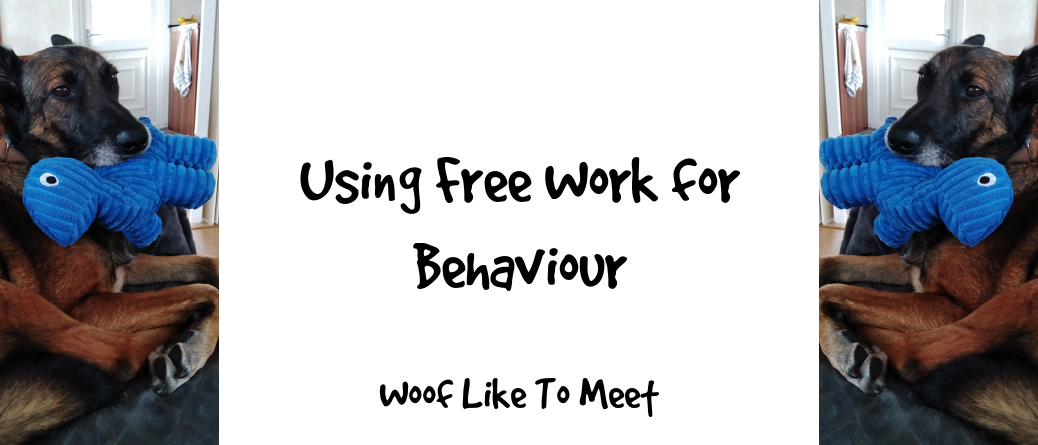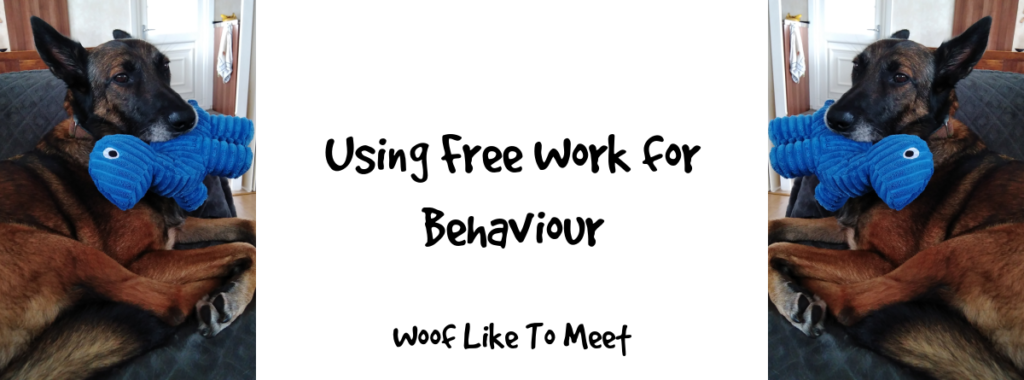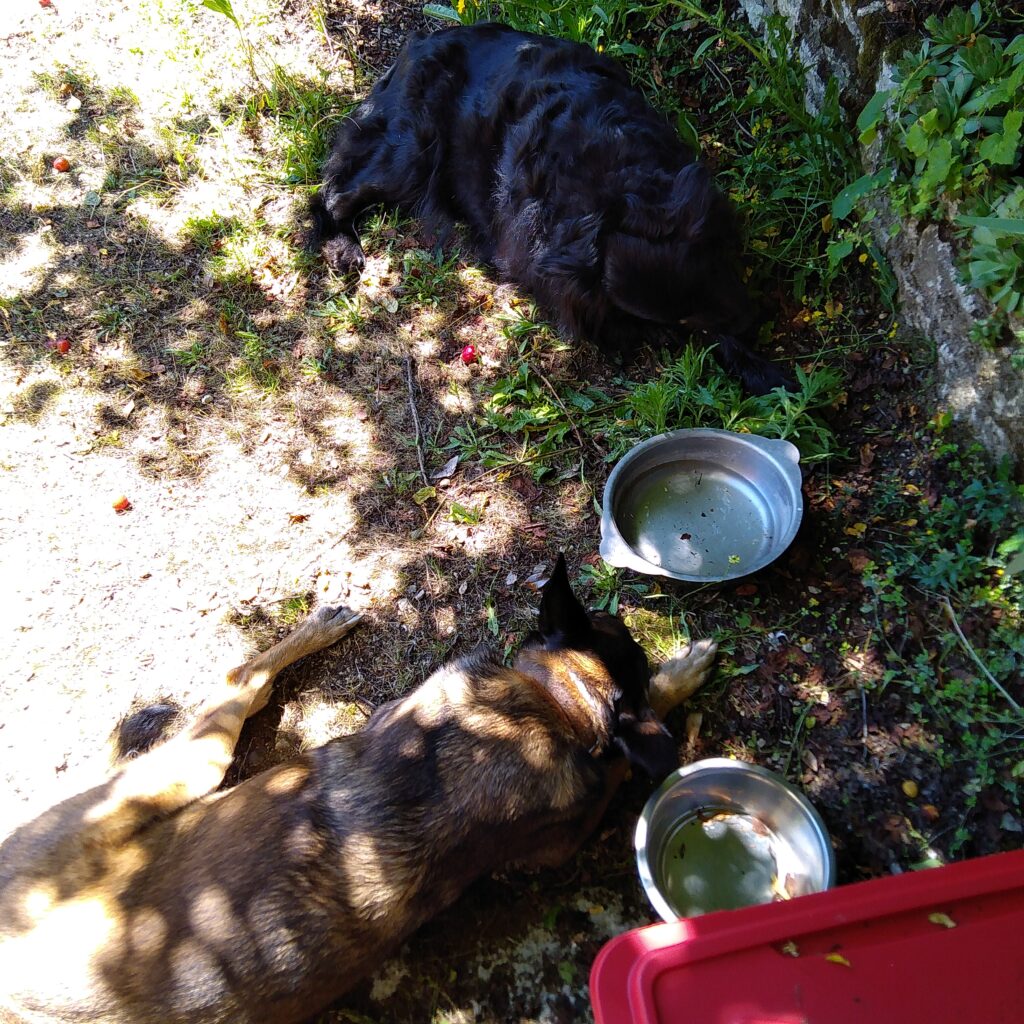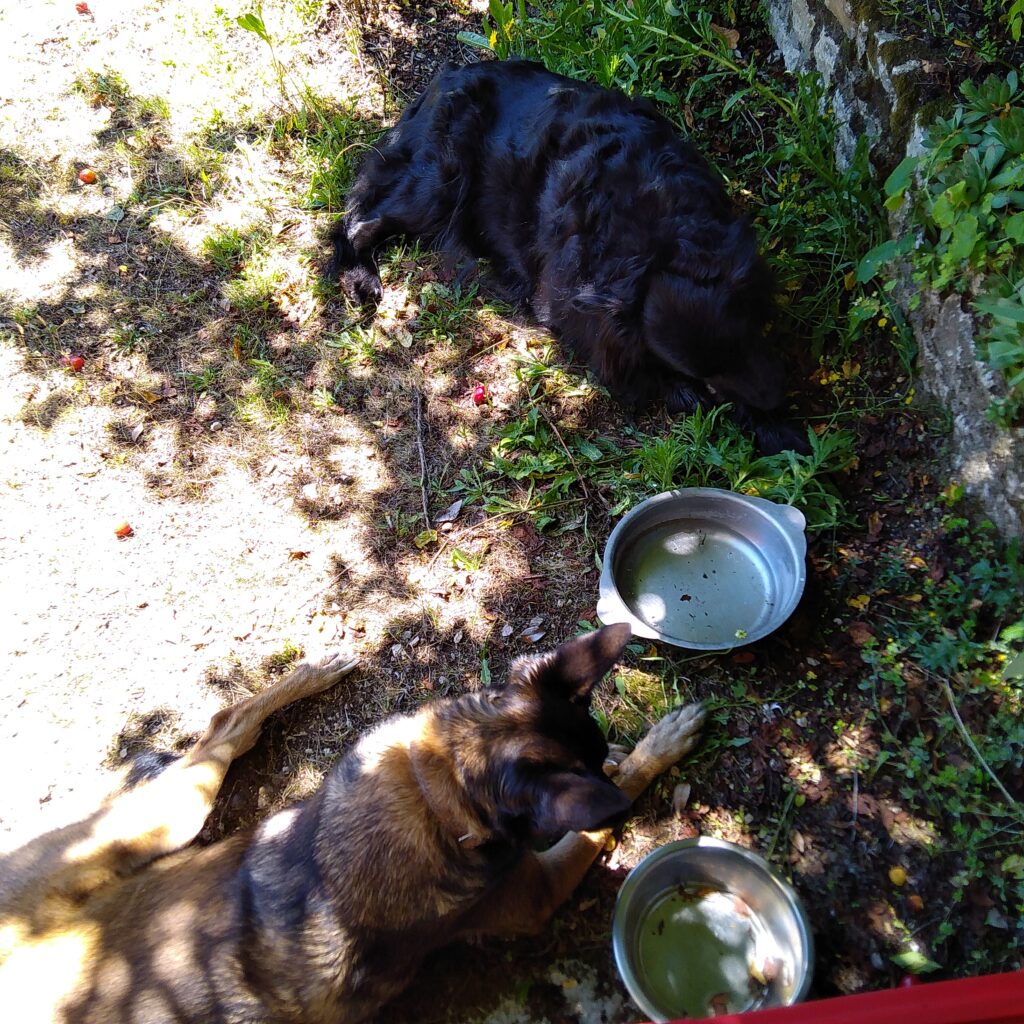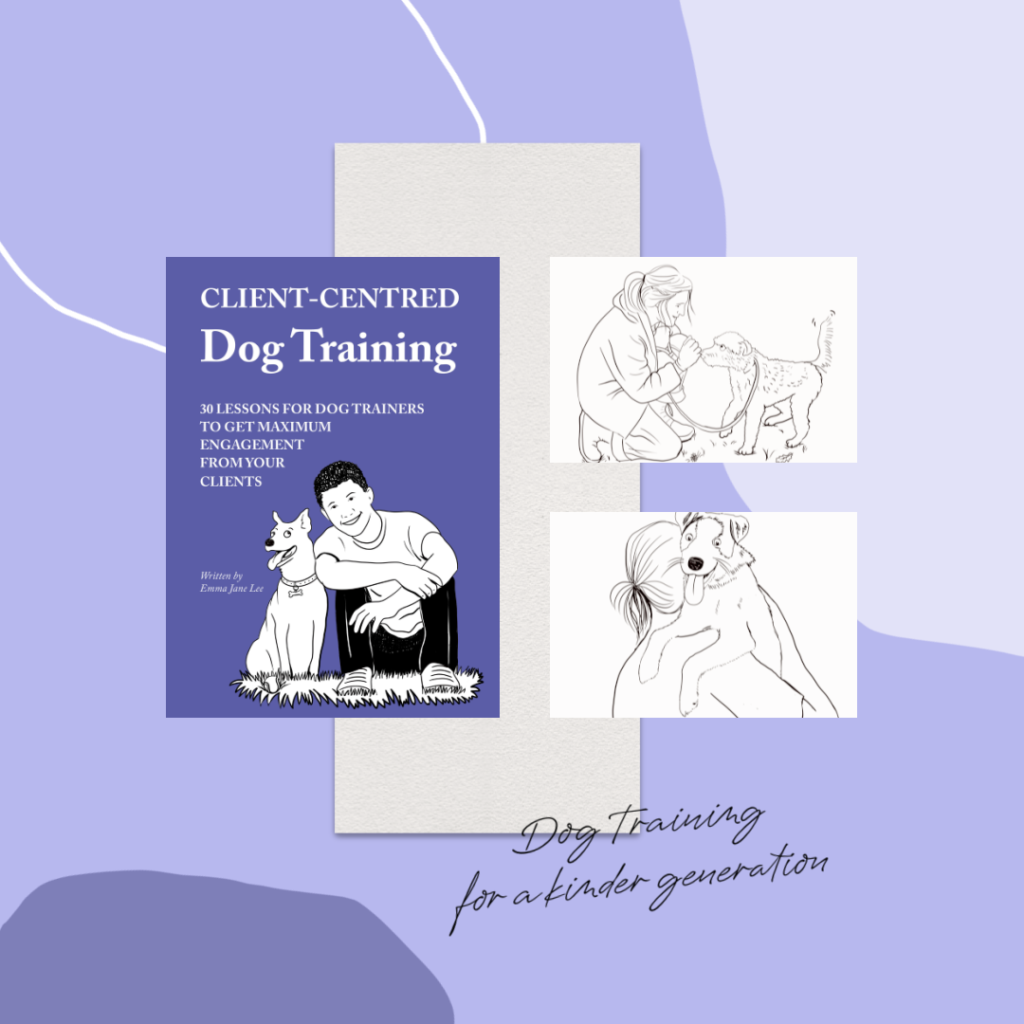One of the greatest gifts to dog life in the last twenty years has undoubtedly been the explosion in foraging toys and feeders. From the simple anti-gobble bowls to the humble Kong, there can’t have been many dogs who didn’t have some kind of food toy in their Christmas stocking last year.
One way that you can start to use these is in free work sessions. Sarah Fisher pioneered the use of free work in her ACE workshops. Since then, it’s gone on to be a really useful diagnostic tool for looking at a dog’s posture, balance, proprioception and movement as well as for helping dogs learn how to move better on the lead.
Although I also use free work for education in this way, I use it a lot for behaviour work too. Not only does free work help the dog learn really valuable skills like persistence and optimism, it also helps the guardian learn loads about their dog.
In this post, I’m going to explain a little about how I use free work within behaviour work, pointing out where Sarah’s guidance has helped me construct these sessions. Over the next five posts, I’m also going to share with you some ways that you can use free work if you have an anxious dog, a frustrated dog, a noise-sensitive dog or even with a dog who struggles to be independent. The final post will look at how you can use regular household items so you don’t have to spend a fortune on toys. Free work needn’t be expensive. These posts will differ in many ways from Sarah’s work on posture and movement although they can also be used for that work too. Free work has been an absolutely invaluable way to put those foraging toys and feeders to good use, using them to educate ourselves about our dogs. It’s also a good way to build in a little enrichment for your dogs too.
Today, I’m going to share ideas on general set-ups and the importance of observation as well as what to look out for. I’ll also give you a little about management.
Setting up the space
You can use a room in your house or a space in the garden. I’ve used mini stations in and around cars for some dogs. I also use free work out on walks as part of Steve Mann’s ‘Rucksack Walk’ – 10 minutes in, we stop, I dig out a load of stuff and we spend 15 minutes out and about. I’ve used it in secure dog fields and in lots of other spaces which I’ll tell you about, particularly when I tell you about how I use free work with fearful dogs.
I would say that the space needs to be a Goldilocks space: just right. Not too hot, not too cold. Not too noisy, but not so quiet that the slightest sound startles the dog. Not too small, but not so big that you can’t see what the dog is doing at the other side of the space.
If you’ve got more than one dog, you will need a way to be able to separate the dogs so their behaviour isn’t influenced by what the other dog is doing and so you don’t end up with fights on your hands as they both make a beeline for the same item. For my dogs, Heston has his in the kitchen usually, and sometimes in the living room, and Lidy has hers in the living room usually and sometimes in the bedroom.
Sarah highlights the importance of having water available, and suggests the use of two different waterbowls, one on the floor and one on a raised surface. I use a child’s bathroom step to put my raised ones on because it’s higher and non-slip, or the Petweighter bowls are also good for that if you want to make that a permanent choice.
I’d also say that it’s important to include two different types of water bowl. Although there can be hygiene issues with some surfaces, there’s nothing sadder than seeing a dog struggling to drink out of a noisy but hygienic bowl that their tags catch on or they are scared of approaching. If you have that type of a dog, by the way, the post about free work with noise sensitive dogs will hopefully help you. I usually remove my dogs’ collars as well before free work, just to remove any influences of jangling tags or sensations of tightness.
You’re also going to need some different floor surfaces in the room. I use rugs of different textures but I also make sure there’s a bed available if they want to use it and that they can access their usual sleeping spots in that room. For instance, Heston likes to eat his Kong on one particular chair, and so I try to make sure he has that chair available or a bed. For dogs who like to take their time with particular items, then having somewhere they can lie down can be really useful. Lidy lies on her snuffle mat. It was Lidy and Heston who taught me the value of having somewhere to lie down and the importance of choice in that. He goes on his chair, and she’ll quite often lie on her snuffle mat.
It’s not always included in free work sessions because they’re about movement, but how dogs lie down is as important for me as how they stand. It can also tell you a lot about how they move from lying to standing. Although I said I’m not going to focus on free work from a postural perspective, that can be really useful information.
Especially if you’re going to include items the dogs can pick up and move with, then you can learn a lot about where they choose to go. This photo was taken with the dogs’ evening meal Kong which is why they aren’t separated, but both choose to lie near each other, lying in a kind of parallel even, near the water, in the shade, outside. The door was open. This choice is purposeful. Every choice they make has a reason, and although we might not be able to tell what those reasons are, the more options we can offer our dogs, the more free work becomes their time.
Even seemingly trivial choices like this can tell us something: perhaps the shade is more valuable than space; perhaps they feel comfortable with each other; perhaps proximity to the water bowl is important; perhaps the follower likes the security of the one who chose.
As Sarah Fisher says, it’s not one-off things that are important, but patterns. Repeated choices can be so insightful.
Though we also do free work inside in closed rooms, there’s still choice. I even include bare flooring space as well which might not be exactly what the vet or the physio order, but Heston often chooses to lie on the laminate flooring rather than a rug and that’s his choice. I can’t deprive him of it just because I’m trying to help him out. He finds it much harder to move on rugs or carpet and it takes more effort, so I have to be mindful of that.
Observing your dogs
The main purpose of free work is observation. It’s our time to watch our dogs and learn from them. You can, of course, use these things as enrichment and occupation. Free work can be a real boredom buster.
That said, it is such a valuable time to watch our dogs that it’d be a waste not to use it. Enrichment is the by-product, not the purpose.
I find it useful to set up a couple of different cameras from different angles, or use my camera and my phone on secure tripods. That helps with wobbly hands, which are not your friend if you are trying to look for postural anomalies. It also helps to make sure the cameras are out of the way of the dogs. I probably don’t do much more with the videos than give them a quick look through afterwards, but I can focus on specific things and really learn a lot.
But what are you supposed to be looking for?
The first thing I do is take a baseline observation over five days. I use the same five bits of equipment. I put them in the same places. I want to see how the dog works around the room.
Do they always go in the same order? Are they working clockwise or anticlockwise? Do they revisit? Do they completely finish one item and move to the nearest next?
Then, after the baseline observation where I’m picking out patterns, I can then vary the order and see if the pattern is about position or if it’s about preference. I do this over five days too. I use the same five items and place them in different orders.
What do I learn from these?
First, I can see patterns. You can’t see a pattern with one observation. You can’t even really see it with two. Three and you can start to see commonalities.
For those five toys, I used a Kong, a SloDog slow feeder plate, a stuffed snake toy, a large snuffle mat and a towel with treats wrapped in it. To be honest, it doesn’t matter what you use as long as it’s things your dog will enjoy.
Heston goes: feeder plate, snake, snuffle mat, Kong, towel.
Lidy goes: feeder plate, snake, snuffle mat, Kong, towel.
Isn’t that funny?
Once I’ve done the five toys in the same position over five days, I then vary where I put them. That enables me to see if my dogs do the same thing. And they do. No matter where I put them or in what order, that’s their preference. From this baseline, I can make observations about order.
When we get to the post about how you can use free work with fearful dogs, these object preferences are going to be really important as well.
I’m not just looking at order, I’m also looking at duration. How long do they spend on each item? Do they leave it and revisit it? How long do they spend with each single bit in total?
I’m also going to think about frequency. Do they revisit things? Which do they revisit? How many times do they revisit? Lidy revisits a lot and will even abandon something half way through. Heston never does.
I can, of course, look at their body language. That may give me information about how relaxed they are, but also I can use it in the same way that Sarah Fisher does to consider posture, balance, proprioception and movement.
I can look at latency. How long does it take them from entering the space to get to each station? What do they leave until last, and why? This has been so interesting when I’ve been using free work for scented items with Lidy to help her learn about the smell of people, cats and dogs. It’s been very telling to see how long it takes her to get to certain items if they’re near something that smells unfamiliar, that she’ll abandon her usual order if the tray is near something that smells of others.
I can also look at the intensity of their eating: how quick do they eat? How do they interact with the objects? This becomes much more important the more items you add in to your free work sessions. After the first ten sessions, I tend to add in one new item a time and cycle through things so that I can build up an idea of how my dogs respond to about thirty or so different items and which they prefer. I’m sure it wouldn’t surprise you to know that Lidy was much more involved with and destructive of a t-shirt that smelled of a strange man than she was with a t-shirt of mine.
Here, I’m using scent as part of our work. Look how Lidy leaves the strange t-shirt until last. Again, a one-off isn’t important. What’s important is knowing if she always did this, particularly if she had only five t-shirts to work through. I could easily use a clean t-shirt, two t-shirts with familiar smells, one with the smell of an unfamiliar woman and one with the smell of an unfamiliar man.
Her choices, by the way, are very different if I include a cat blanket in there!
This isn’t just for curiosity. It really helps us understand our dogs more.
Prepare your dog
This sounds like a really dumb thing to say, I know. However if your dog wouldn’t be able to cope with five food toys, if they’re destructive or they’d start to pull at things if they got frustrated, then teaching them Chirag Patel’s Counting Game can really help. It’s also useful if they have a history of guarding things from you. If they get a bit too involved, I simply start counting out treats and refocus them on something else.
I teach this out of context first. No point trying to use it while Rover is dismantling a lickimat. You’ll notice I only included robust toys at first as well. That’s important. I need my dog to be able to engage calmly with the items and not end up ingesting things or guarding the items I’ve put down.
Using something like the counting game can move your dog away without confrontation.
Setting up the stations
I tend to use five activities as I said above. For the first session, I’ll need to make sure the toys are not too frustrating for the dog. That might mean using kibble and low fat paté or soft cheese to block the end of a Kong. It also might mean using the right toys in the first place: Kong black toys are more robust than red ones, for instance. A lickimat would never be my go-to either, unless I knew my dog wouldn’t pull it apart. Solid-based lickimats are more robust, but even those can splinter. If in doubt, I go easy and I go robust. As long as the dog knows the Counting Game, it should get us out of any difficult spots so I can set it up better next time.
It’s also important to use different surfaces and different heights for the toys. I didn’t in the video above, but I do usually. I’ve got a Caitec ‘Chase N Chomp’ sticky silicone bone which sticks to walls, and that can add some height, but I also put things on steps and platforms, making sure they are not likely to slip about. Non-slip surfaces and steps for children are ideal. I also use an old aerobic step from Step class. I have some under-rug fabric that helps secure them in place if they’re likely to move.
I often start with a few days with the same food or similar foods in each item. Then I might start varying items. Lidy likes soft. She does like chews, but they take her ages. Heston doesn’t mind crunch, despite his teeth. He likes chewing things as well. Because he’s quicker than she is, I often include more solid chewables for him. There should be variety in texture, smell and taste. That’s another way to increase variety even if you keep re-using the same toys.
I would say that we need to be careful if we’ve got a fearful, frustrated or noise-sensitive dog to make sure that we’re picking the right toys as well as where we position them. Some toys are incredibly noisy and it’s really important that the experience shouldn’t scare your dog. You can certainly use it to build up your dog’s tolerance of scary stuff, and I’ll take you through ways to do that, but don’t stick them in front of the vacuum cleaner if your dog is scared of the vacuum cleaner for example.
A final note is that I use free work to help fearful dogs become less fearful, frustrated dogs learn some resilience, noise-sensitive dogs learn to cope with some noise, spooky dogs cope with the world outside and hyperattached dogs learn that life can be fun on their own too. That said, it’s always a progressive programme and I never, ever use food to entice or lure a dog closer than they would normally get to things they’re afraid of. It’s really important that food isn’t used as some kind of magnet to speed up natural cognitive processes.
Lastly, all free work should be supervised. These toys aren’t dog sitters to help you get through five hours of zoom meetings with a teenage dog in the other room. Having been the person who’s had to rush dogs to the emergency vet services, I promise I’m speaking from experience.
Join me next time to look at some free work in action with fearful dogs, looking at how you can use it to build resilience, coping skills, problem-solving skills and optimism as well as giving your dog full control over the decision-making processes. You’ll see how to build in items for desensitisation and for counter-conditioning too.
If you’re a dog trainer and you’re looking to use more cooperative ways to work with your clients rather than enforcement and compliance, why not check out my book?
Don’t just take my word for it. One reviewer said: ‘For those starting out on their professional journey, this is like an Aladdin’s cave of wisdom and knowledge, all in one book.’
p.s. it might also be useful if you’ve been a dog trainer since time began. You can teach old dogs new tricks after all!

